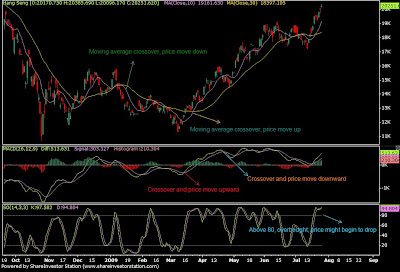There are two schools of thoughts when it comes to investing. First being the fundamentalist and second the technical analyst. The fundamentalist basically look at financial statement of the company and study in detail the business environment and future prospect of the company before they make the decision to buy. Usually the time frames for holding the counters are relatively longer, 3 years or more. They would not sell the stock for a profit unless the fundamental of the business changes and is no longer consider as attractive to them.
The technical analyst on the other hand is interested in studying price chart of the stock and do not rely upon the fundamental of the company to make decision to buy or sell. They are basically more interested in the psychology of the market. Whether is the market in panic selling or panic buying mode, this is what the technical analyst is interested in.
This is my understanding of the two version of investing, explained in plain laymen term. To find out more in depth of the academic explanation, pls visit www.investopedia.com to find out more.
It is important to understand the difference between these two styles of investing. A lot of people begin with the mindset that they are investing for the long term so that makes them a fundamentalist. However they are constantly looking to sell for profit or cut loss when market rally or plunge. To me, this is not what a fundamentalist would do. As a result of such inconsistency in trading method, more often than not, the investor would lose money. Eventually, he/ she would lose confidence in stock trading. When you buy a stock and look to cash in for profit for the shortest point of time, it is very important that you know how to use technical analysis to find out the market sentiment. The fund manager and the rich are the ones who move the market. Therefore, it makes sense if we follow the trend of where the smart money is going into. Some people might question the feasibility of this method and would challenge that we should be the one who determine the direction of the stock price. However, I would like to ask you a simple question, is your capital for investing large enough and comparable to big funds institution? The answer is usually a big 'No'.
As per the objective of this blog, I am a full time trader, I am not an investor. I buy and sell stock for a living. Thus technical analysis is part and parcel of the tools that I use to base my decision upon. Short term trading of stocks requires a lot of hard work from your part and pls takes note that there are no easy lunches in stock trading. In the next few posting, I shall talk more about the different common technical analysis used to determine the market sentiment. But before I begin with that, I would cover the basic of how to read price chart of a stock in my next posting.





